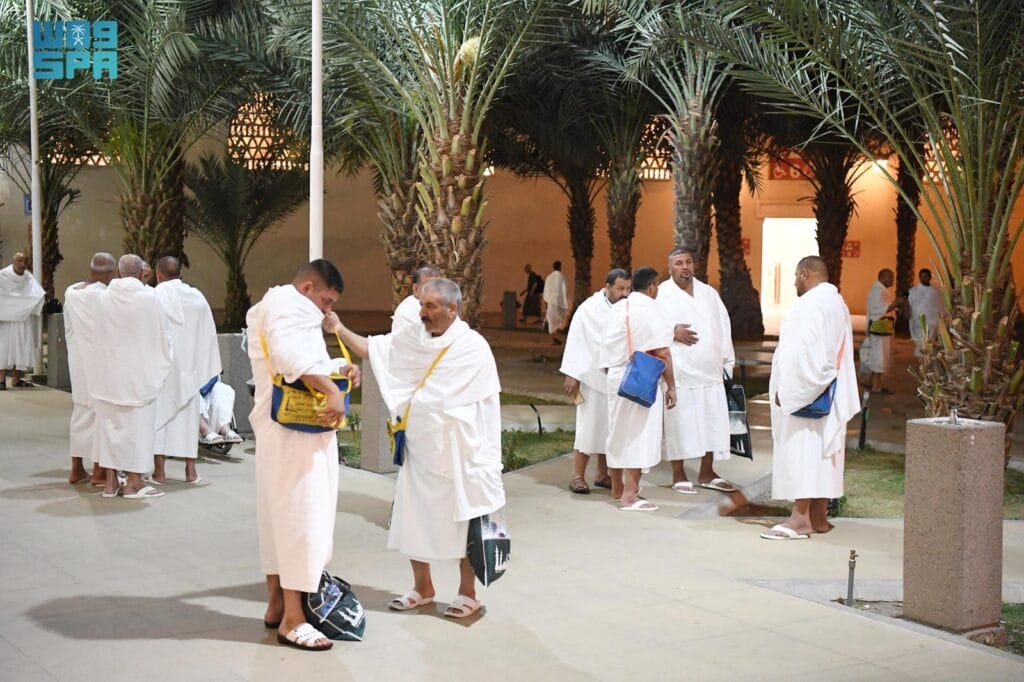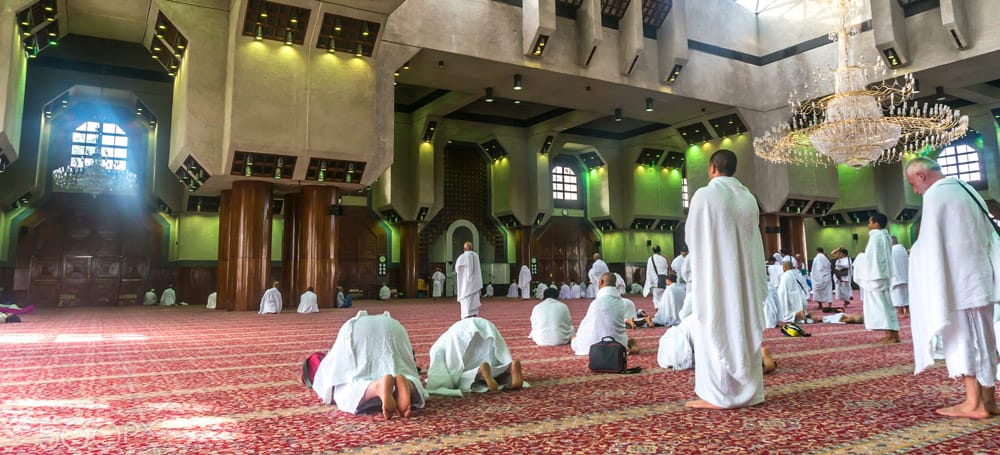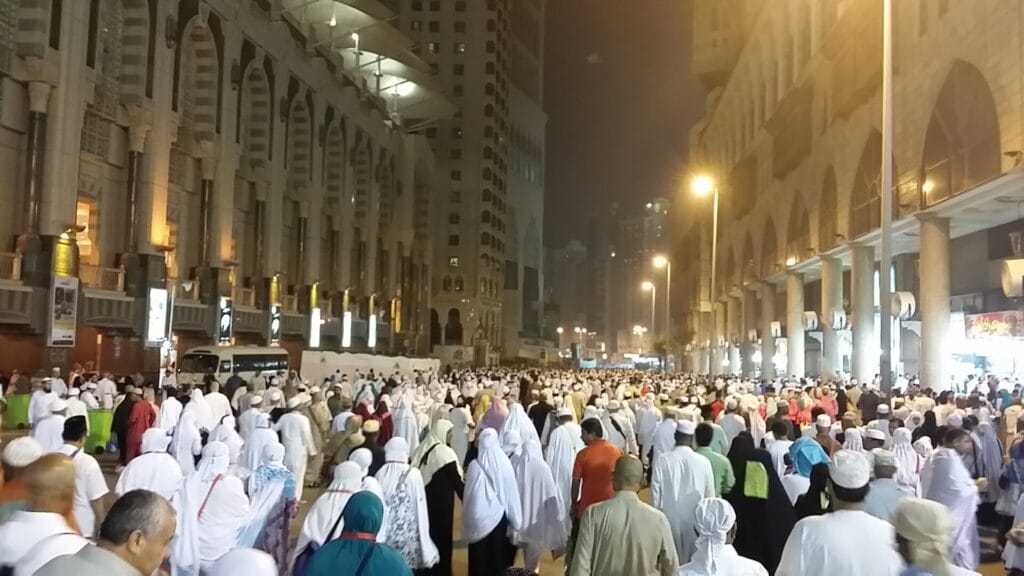miqat haji are one of the important matters in Islamic law. Hajj and Umrah are completely dependent on the timings, whether temporal or spatial, and Umrah or Hajj is not valid without entering ihram at those timings. The Messenger, may Allah bless him and grant him peace, explained the details of these timings, whether temporal or spatial, in detail. Each side has a specific time for Ihram. In this article, we will discuss the definition of the miqat haji and its importance, with an explanation of the meeqats in Islam.
What is the meeqat?
The miqat haji and its plural “miqat” are defined linguistically as the time set for an action or appointment, just like the timings for work. It also means a place where something is done. The concept of the meeqat in Islam is divided into two types:
- Miqat zmani: It is the time specified for any action, such as the times for prayer, or as mentioned in the Holy Qur’an: “They ask you about the crescent moon. Say, ‘These are times for the people and for the Hajj.’” Here it means the times for the Hajj.
- Miqat Makani: These are the places designated by the Noble Messenger for Muslims to enter into ihram in preparation for performing the rituals of Hajj or Umrah. They are considered the actual beginning of the rituals, and Hajj or Umrah is not valid without entering into ihram at the specific Miqat for each country.
What are the timings for Hajj and Umrah?
Firstly, al miqat alzaman for Umrah
Scholars generally agreed that it is permissible to enter ihram for Umrah at all times of the year, but there was some disagreement among the imams regarding certain days of the year, which we will explain below:
The Hanafi school of thought: Abu Hanifa considered it undesirable to perform Umrah at four times of the year, which are:
- ARAFA day.
- The Day of Sacrifice, and the Days of Tashreeq after it.
- The most famous Hajj, for those who want to perform Hajj and are from the people of Mecca.
- Combining two Umrahs with one Ihram at the same time.
Secondly, the miqat haji
The jurists unanimously agreed that the miqat haji is the months of Hajj, which are Shawwal, Dhul-Qa’dah, and the first ten days of the month of Dhul-Hijjah, and it is not valid to enter ihram for Hajj during months other than Hajj.
What are the spatial timings for Hajj?
Just as Allan specified in Surah Al-Baqarah the timetables for Hajj, Allah specified Mecca as a place for Hajj and Umrah in Surah Al-Ma’idah in the Almighty’s saying, “Allah made the Kaaba, the Sacred House, a standing place for the people.” The Messenger, may Allah bless him and grant him peace, clarified the miqat haji for all those arriving from different places to perform the rituals as follows:
- Miqat for the people of Mecca: Or what is known as the Harami or Meccan Miqat. The pilgrim enters ihram from his home, so he performs ablution, intends to enter ihram, and says, “Labbayk Hajj.”
- The miqat of the people of Medina: Medina is located to the north of the Sacred House, and its miqat is called Dhu al-Hulayfa, after a plant that is found frequently in this place, but it is currently known among people as the miqat of Abyar Ali. Abyaar Miqat is the farthest from Mecca, as the distance between them is 400 kilometers
- The miqat of the people of the Levant: The miqat of the people of the Levant later became the miqat of Egypt, Sudan, Morocco, and many African countries, and it is known as the miqat of Al-Juhfa. It is located near the city of Rabigh and is about 183 kilometers away from Mecca.
- The miqat of the people of Najd and Taif: It is the miqat of Qarn al-Manazel and is known as the miqat of al-Sail al-Kabir, and it is 75 kilometers away from Mecca on the eastern side.
- Miqat for the people of Yemen and the South: It is known as Miqat Yalamlam, and it is a mountain in the south of Mecca and is approximately 54 kilometers away from it.
- Miqat for the people of Iraq: It is a mountain known as Dhat Irq and is 94 kilometers away from Mecca. It is a miqat for the people of Iraq and beyond.
All of the above are the spatial timings designated by the Holy Messenger. As for those who are from a place that does not pass by these timings, such as the residents of Europe and Asia, they are to enter into ihram from their home, based on the words of the Messenger.
And whoever is less than that, his ihram is from wherever he originates.” That is, whoever does not pass these timings and the travelers. By plane and sea, they can enter into ihram from their homes and adhere to the rules of ihram. They do not wear perfume and men do not wear sequins or touch women until they arrive in Mecca and perform the rituals.
What are the local timings for Umrah?
Scholars have agreed that the miqat haji determined by the Messenger of Allah, may Allah bless him and grant him peace, are the same as the times for Umrah, except for the people of Mecca. If the people of Mecca and those residing there want to enter ihram for Umrah, he must leave Mecca, enter ihram.
And wash himself in Al-Tan’im, which is the mosque of Lady Aisha, or to Al-Jarana or Arafat outside Mecca, and he intends to perform Umrah, so he says, “Labbayk Umrah,” and intends to perform Umrah in his heart, citing as evidence what our Messenger, may God bless him and grant him peace, commanded Lady Aisha when The Umrah wanted to go to Tan’im, so she entered into ihram from Tan’im while he was outside the Haram.
Conclusion
In the end, most jurists agreed that whoever exceeds the place miqat haji and Umrah without entering ihram must return to ihram from the specified miqat for him, otherwise he must offer a sacrifice. If he does not, then fast for three days during Hajj or seven if he returns to his country.
And in the Shafi’i school of thought. Whoever takes a route for Hajj or Umrah that does not pass through a miqat may enter into ihram from being adjacent to it. If one is adjacent to two miqats, it is more ihram than being adjacent to the one closest to him, and if they are equal in proximity, he must enter ihram from being adjacent to the miqat furthest from Mecca.



